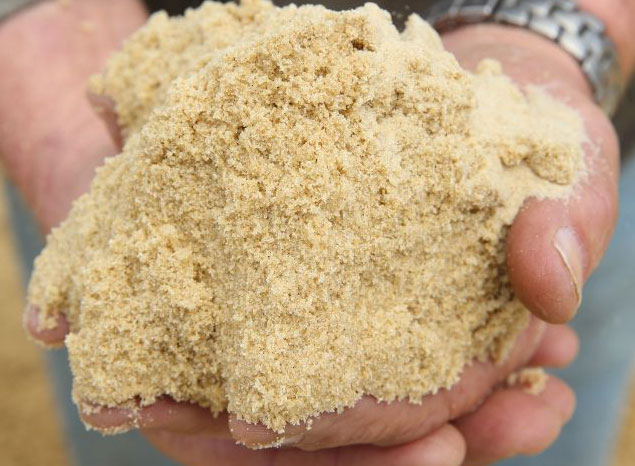Home » Blog » What is Glass Sand? how is it made? Its applications
Posted on : 25-06-2025 Author : Atulya Singhvi

As the world moves toward more sustainable construction practices, recycling plays a vital role in reducing waste and conserving natural resources. One such innovation is glass sand — a recycled material made from waste glass that mimics the appearance and texture of natural sand. But what exactly is glass sand, how is it produced, what is its chemical composition, and can it be safely and effectively used in construction, especially in mixing with cement for building houses?
Glass sand is a fine, granular material created by crushing and grinding waste glass into particles that resemble natural sand. It is often produced from post-consumer glass products such as bottles, jars, window panes, or mirrors.
The final product can vary in grain size — from coarse particles to fine sand — and has rounded edges, making it safe to handle and use in industrial applications.
The process of making glass sand involves several mechanical steps:
Collection and Cleaning:
Waste glass is collected and cleaned to remove labels, caps, and other contaminants.
Crushing:
The glass is fed into a glass crusher or pulverizer, where it is broken into smaller fragments.
Grinding:
These fragments are ground down into fine particles, similar in size and texture to natural sand.
Screening and Filtering:
The particles are screened to separate coarse and fine grades as needed for different applications.
Final Output:
The result is a sand-like material ready for reuse in construction, landscaping, or even as an alternative for natural beach sand
Most waste glass used in recycling is soda-lime glass, the most common type found in containers and windows.
Here is the typical chemical composition of glass sand:
data-col-size="sm">Silicon Dioxide
| Compound | Chemical Formula | Approx. % by Weight |
|---|---|---|
| SiO? | 70–75% | |
| Sodium Oxide | Na?O | 12–15% |
| Calcium Oxide | CaO | 10–12% |
| Minor Additives | (e.g., MgO, Al?O?) | 3–5% |
Compared to natural sand, which is mostly pure quartz (SiO?), glass sand contains additional alkali and stabilizing oxides, making it chemically reactive in different ways.
Yes, glass sand can be used as a partial replacement for natural sand in concrete and mortar — but with some important considerations.
Sustainable alternative to depleting river sand resources.
Reduces landfill waste and promotes circular economy.
Can improve the workability and finish of concrete mixes.
Alkali-Silica Reaction (ASR):
The silica in glass can react with alkalis in cement, causing expansion and cracking over time. This risk can be reduced by using pozzolanic materials (like fly ash) in the mix.
Strength Variability:
Studies show that replacing up to 20–30% of natural sand with glass sand often results in comparable or better compressive strength, but higher percentages may reduce performance.
Particle Shape and Size:
Glass sand tends to have smoother, less angular particles, which can affect bonding in concrete.
Glass sand is an innovative and eco-friendly material made by crushing waste glass into a sand-like form. Chemically rich in silica, with added alkali and stabilizers, it offers a promising alternative to natural sand in construction.
While it can be mixed with cement for house construction, it should be used with proper care and testing to avoid issues like alkali-silica reaction. With the right mix design and quality control, glass sand can be a sustainable supplement in modern building practices — helping us reduce our environmental footprint while building stronger, greener structures.